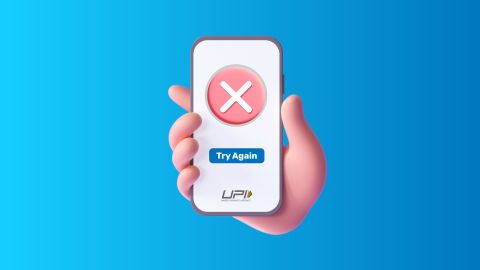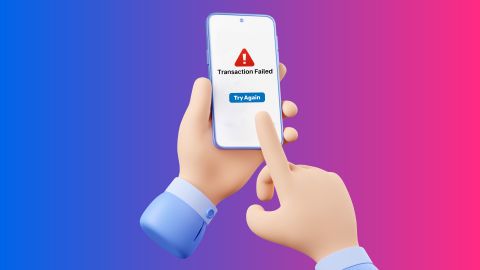In this article we delve into the future developments in wireless electricity technology, including safety measures, environmental impacts, and regulatory standards.
All about wireless electricity technology
-
Wireless electricity technology represents a groundbreaking advancement in how we transmit power without the need for physical connections. This innovative approach eliminates the constraints of traditional wired systems, allowing for greater flexibility and convenience in powering devices. As our reliance on electronic devices continues to grow, the demand for efficient and user-friendly power solutions has never been higher. Wireless power transfer (WPT) technology enables the charging of devices such as smartphones, electric vehicles, and medical equipment without the hassle of plugging in. This technology not only enhances user experience but also paves the way for new applications in various industries, making it a significant area of research and development in the field of electrical engineering.
Wireless electricity technology is reshaping how we power devices, offering convenience without the need for physical connections. Similarly, BBPS platforms like Bajaj Pay bring ease to electricity bill payments. Just as wireless tech removes the hassle of cords, Bajaj Pay ensures that your bill payments are quick, seamless, and completely hassle-free—powering your life with simplicity.What is wireless power transfer?
Wireless power transfer (WPT) is a technology that allows electrical energy to be transmitted from a power source to an electrical load without the use of physical connectors or wires. This method of power transmission utilises electromagnetic fields to transfer energy over short distances, making it a convenient solution for charging devices and powering equipment. WPT can be categorised into several methods, including inductive coupling, resonant inductive coupling, and microwave power transmission. The technology has gained traction in recent years due to it is potential to simplify charging processes and reduce wear and tear on physical connectors. As wireless power systems become more efficient and widely adopted, they are expected to revolutionise the way we think about energy consumption and device charging.How does wireless power transfer work?
Wireless power transfer operates on the principle of electromagnetic induction, where energy is transferred through electromagnetic fields. The process begins with a power source that generates an alternating current (AC), which creates a magnetic field around a transmitter coil. When a receiver coil is placed within this magnetic field, it induces an electric current in the receiver coil, allowing power to be transferred wirelessly. The efficiency of this transfer depends on factors such as the distance between the coils, their alignment, and the frequency of the alternating current.
In addition to inductive coupling, other methods like resonant inductive coupling enhance the efficiency of power transfer by tuning the transmitter and receiver coils to the same resonant frequency. This allows for greater energy transfer over longer distances compared to traditional inductive methods. Overall, WPT technology is designed to provide a seamless and efficient way to power devices without the limitations of wired connections.Methods of wireless power transfer
Wireless power transfer can be achieved through several methods, each with its own advantages and applications. The most common methods include:Inductive coupling
This method uses electromagnetic induction to transfer energy between two coils. The primary coil generates a magnetic field when an alternating current flows through it, inducing a current in the secondary coil placed nearby. Inductive coupling is widely used in applications like wireless charging pads for smartphones and electric toothbrushes.Resonant inductive coupling
This advanced method enhances the efficiency of inductive coupling by tuning both the transmitter and receiver coils to the same resonant frequency. This allows for energy transfer over greater distances and with less energy loss. Resonant inductive coupling is particularly useful in applications such as electric vehicle charging and powering multiple devices simultaneously.Microwave power transmission
This method involves converting electrical energy into microwave radiation, which is then transmitted to a receiver that converts it back into electrical energy. Microwave power transmission can be used for long-distance energy transfer, such as beaming solar energy from space to Earth.Laser power transmission
This method uses focused laser beams to transmit energy to a photovoltaic cell, which converts the light back into electricity. Laser power transmission is still in experimental stages but holds potential for specific applications, such as powering drones or remote sensors.Inductive coupling
Inductive coupling is one of the most widely used methods of wireless power transfer. It relies on the principle of electromagnetic induction, where a changing magnetic field induces an electric current in a nearby coil. In this method, a primary coil connected to a power source generates a magnetic field when an alternating current flows through it. A secondary coil, placed within this magnetic field, picks up the induced current, allowing for energy transfer.
Inductive coupling is commonly used in applications such as wireless charging pads for smartphones, electric toothbrushes, and wearable devices. Its advantages include ease of use, safety, and the elimination of physical connectors, which can wear out over time. However, the efficiency of inductive coupling decreases with distance, making it more suitable for short-range applications.Resonant inductive coupling
Resonant inductive coupling is an advanced form of inductive coupling that improves the efficiency of wireless power transfer. In this method, both the transmitter and receiver coils are tuned to the same resonant frequency, allowing for greater energy transfer over longer distances compared to traditional inductive coupling.
When the coils are resonant, they can exchange energy more effectively, minimising energy loss and maximising the amount of power transferred. This method is particularly beneficial for applications such as electric vehicle charging, where the distance between the coils may vary. Resonant inductive coupling also enables the simultaneous charging of multiple devices, making it a versatile solution for modern energy needs.Applications of wireless power transfer
Wireless power transfer technology has a wide range of applications across various industries, including:- Consumer electronics: Wireless charging pads for smartphones, tablets, and smartwatches allow users to charge their devices without the hassle of cables.
- Electric vehicles: WPT technology is being developed for electric vehicle charging stations, enabling drivers to charge their vehicles without plugging in.
- Medical devices: Wireless power transfer is used in medical implants and devices, allowing for safe and efficient charging without invasive procedures.
- Industrial equipment: WPT can power sensors and equipment in industrial settings, reducing the need for wired connections and improving safety.
-
Recharge and Pay Bills
Mobile Prepaid
Mobile Postpaid
Broadband Bill Payment
Electricity Bill Payment
Bajaj Finserv App for All Your Financial Needs and Goals
Trusted by 50 million+ customers in India, Bajaj Finserv App is a one-stop solution for all your financial needs and goals.
You can use the Bajaj Finserv App to:
You can use the Bajaj Finserv App to:
- Apply for loans online, such as Instant Personal Loan, Home Loan, Business Loan, Gold Loan, and more.
- Explore and apply for co-branded credit cards online.
- Invest in fixed deposits and mutual funds on the app.
- Choose from multiple insurance for your health, motor and even pocket insurance, from various insurance providers.
- Pay and manage your bills and recharges using the BBPS platform. Use Bajaj Pay and Bajaj Wallet for quick and simple money transfers and transactions.
- Apply for Insta EMI Card and get a pre-approved limit on the app. Explore over 1 million products on the app that can be purchased from a partner store on Easy EMIs.
- Shop from over 100+ brand partners that offer a diverse range of products and services.
- Use specialised tools like EMI calculators, SIP Calculators
- Check your credit score, download loan statements and even get quick customer support—all on the app.
Frequently asked questions
How does wireless power transfer work?
It works by using electromagnetic fields to transfer energy between a transmitter and a receiver, typically through inductive or resonant coupling.
What are the main methods of wireless power transfer?
The main methods include inductive coupling, resonant inductive coupling, microwave power transmission, and laser power transmission.
What are the applications of wireless power transfer?
Applications include charging consumer electronics, electric vehicles, medical devices, and powering industrial equipment.
What are the advantages of wireless power transfer?
Advantages include enhanced convenience, improved safety, reduced wear on connectors, and the ability to charge multiple devices simultaneously.
What are the limitations of wireless power transfer?
Limitations include efficiency losses over distance, potential interference with other devices, and regulatory challenges.
Show More
Show Less




